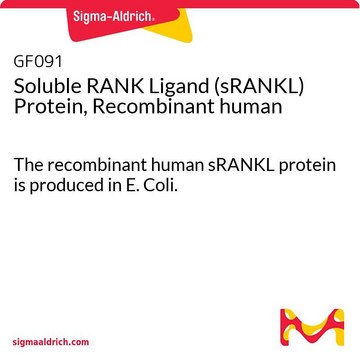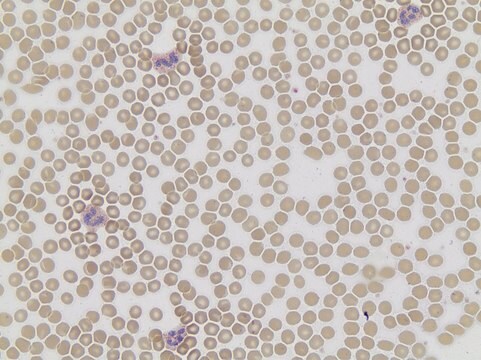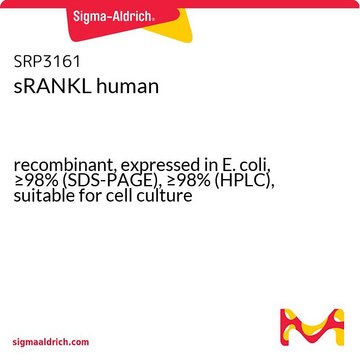Key Documents
T3573
RANK Ligand/TRANCE human
>90% (SDS-PAGE), recombinant, expressed in NSO cells, lyophilized powder
Synonim(y):
Osteoclast Differentiation Factor (ODF), Osteoprotegerin Ligand (OPGL), Receptor Activator of NF-KB Ligand (RANKL), TNF-related activation-induced cytokines (TRANCE)
About This Item
Polecane produkty
pochodzenie biologiczne
human
Poziom jakości
rekombinowane
expressed in NSO cells
Próba
>90% (SDS-PAGE)
Postać
lyophilized powder
siła działania
1.5-7.5 ng/mL ED50
masa cząsteczkowa
glycolysylated recombinant product ~35 kDa by SDS-PAGE
calculated mol wt 23 kDa
opakowanie
pkg of 10 μg
warunki przechowywania
avoid repeated freeze/thaw cycles
zanieczyszczenia
endotoxin, tested
numer dostępu UniProt
Zastosowanie
cell analysis
temp. przechowywania
−20°C
informacje o genach
human ... TNFSF11(8600)
Opis ogólny
Zastosowanie
Działania biochem./fizjol.
Postać fizyczna
Komentarz do analizy
Kod klasy składowania
11 - Combustible Solids
Klasa zagrożenia wodnego (WGK)
WGK 3
Temperatura zapłonu (°F)
Not applicable
Temperatura zapłonu (°C)
Not applicable
Środki ochrony indywidualnej
Eyeshields, Gloves, type N95 (US)
Certyfikaty analizy (CoA)
Poszukaj Certyfikaty analizy (CoA), wpisując numer partii/serii produktów. Numery serii i partii można znaleźć na etykiecie produktu po słowach „seria” lub „partia”.
Masz już ten produkt?
Dokumenty związane z niedawno zakupionymi produktami zostały zamieszczone w Bibliotece dokumentów.
Nasz zespół naukowców ma doświadczenie we wszystkich obszarach badań, w tym w naukach przyrodniczych, materiałoznawstwie, syntezie chemicznej, chromatografii, analityce i wielu innych dziedzinach.
Skontaktuj się z zespołem ds. pomocy technicznej








